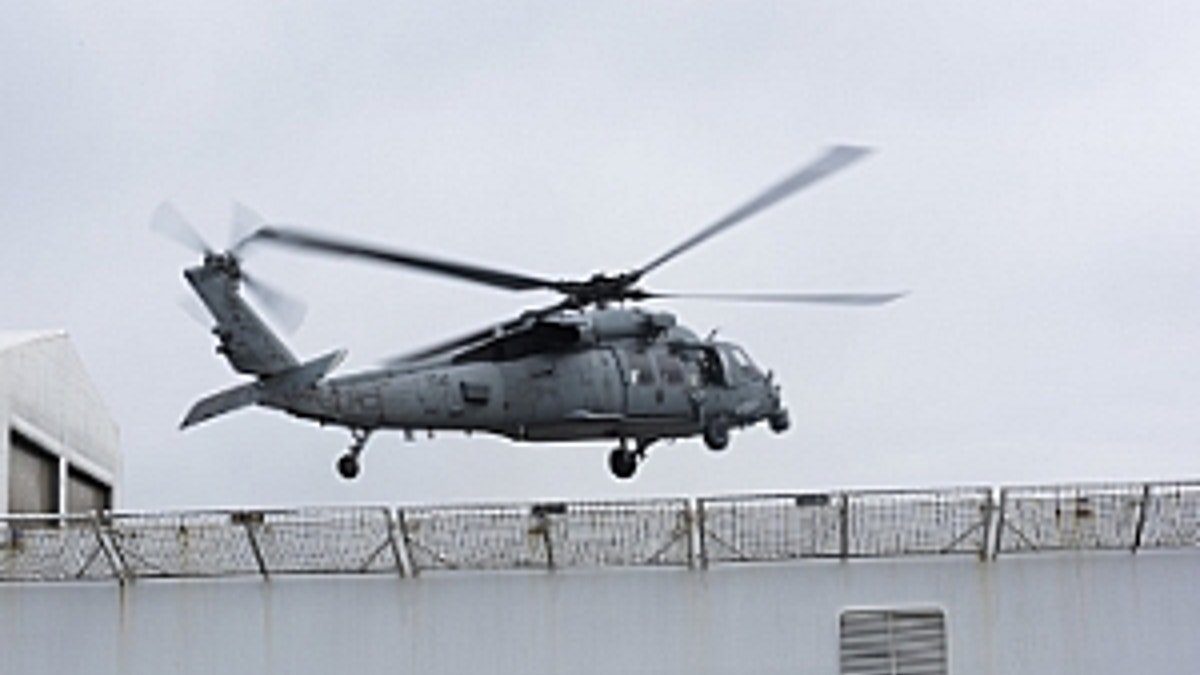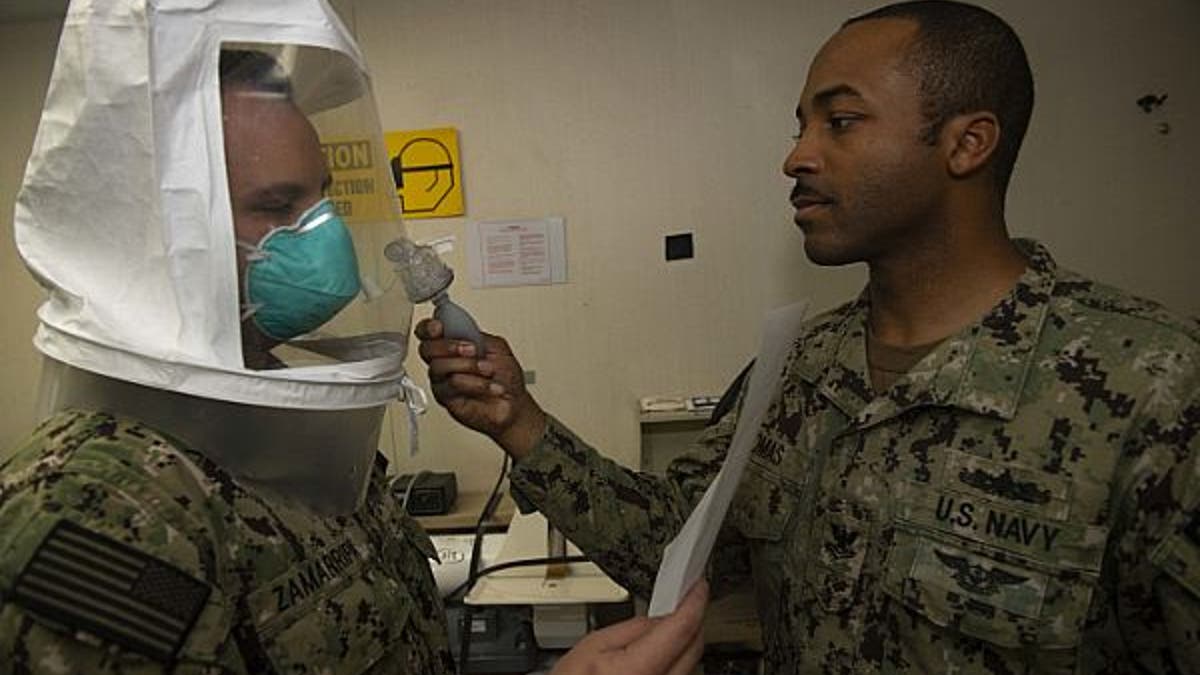USNS Comfort to begin treating coronavirus patients
Commanding officer Capt. Patrick Amersbach on precautions being taken to keep other patients and crew safe from COVID-19 exposure.
Get all the latest news on coronavirus and more delivered daily to your inbox. Sign up here.
Navy helicopters are delivering respirators to health care crew members on board the USNS Comfort now treating COVID-19 patients in the New York City area, Navy officials said.
The delivery includes “air purifying respirators” to protect the health care team from inhaling viral agents while treating patients on the hospital ship in close quarters.
“The delivery was 20 Positive pressure suits for infectious disease control, extra filters, batteries, and battery chargers for the suits,” Navy spokeswoman Lt. Mary Catherine Walsh told Warrior Maven in a written statement.
PENTAGON TAKES AIM AT CORONAVIRUS WITH 8,000 VENTILATORS
Given the need for a rapid, comprehensive response to the pandemic, the USNS is now treating both COVID-19 patients as well as others in need of treatment onboard the ship.

An MH-60S Seahawk assigned to the "Night Dippers" of Helicopter Sea Squadron (HSC) 5, brings supplies to the Military Sealift Command hospital ship USNS Comfort. (U.S. Navy photo by Mass Communication Specialist 2nd Class Adelola Tinubu/Released)
The respirators include “a full face mask device that provides complete respiratory isolation from the surrounding environment, with a tube connected to a filtration system that is worn on the belt,” Cmdr. Todd Morris, director of the department for medical services, said in a statement.
The Navy supply initiative, which used MH-60S helicopters, is designed to connect the ship’s treatment of patients with COVID-19 efforts at Javits New York Medical Station. As the respirators arrive onboard the USNS Comfort, personnel are testing the effectiveness of the equipment with saccharine mist. Saccharine mist is a flavored, harmless aerosol sprayed at a respirator mask to ensure it is airtight and properly fitted to the crew member wearing it, therefore preventing pathogens or viral agents from entering.
PENTAGON MODIFIES 1,500 CONTRACTS IN CORONAVIRUS, SMALL BUSINESS SUPPORT EFFORT

Hospital Corpsman 2nd Class Vernon Thomas, right, tests for a proper seal on respiratory protective equipment by administering a saccharine mist for Hospitalman David Zamarripa to detect during a fit test aboard the Military Sealift Command hospital ship USNS Comfort while the ship is in New York City in support of the nation’s COVID-19 response efforts. (U.S. Navy photo by Mass Communication Specialist 2nd Class Sara Eshleman/Released)
It makes sense that respirators would be used for those in closest contact with infected patients because they are found to be much more effective than face masks, according to a published study from the U.S. National Library of Medicine, National Institutes of Health.
“Surgical masks are primarily designed to protect the environment from the wearer, whereas the respirators are supposed to protect the wearer from the environment,” the study states. Viral penetration with respirators, the study findings state, is much less than 5 percent.
CLICK HERE FOR COMPLETE CORONAVIRUS COVERAGE
Also, as part of a massive, service-wide relief effort in support of supply deliveries, the Navy has published a COVID-19 Prevention document. Among many things, the document instructs sailors, commanders and civilians preparing for deployment onboard Navy ships to get screened before boarding, provide family contact information and quarantine for 14 days before boarding.






















